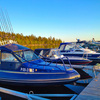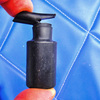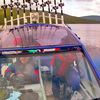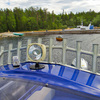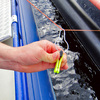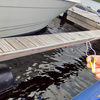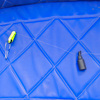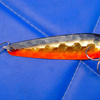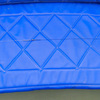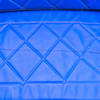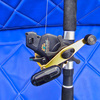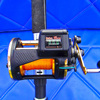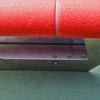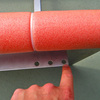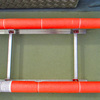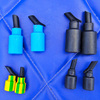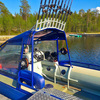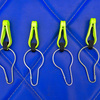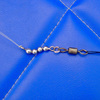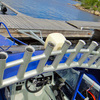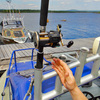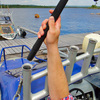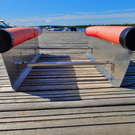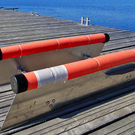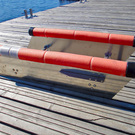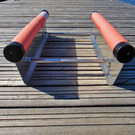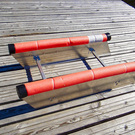Trolling with gliders
-
 Троллинг с планерами на ВТВ 2018 / Trolling in the Upper-Tuloma reservoir
Троллинг с планерами на ВТВ 2018 / Trolling in the Upper-Tuloma reservoir -
 Троллинг Верхнетуломское водохранилище ВТВ 2016 / Trolling in the Upper-Tuloma reservoir
Троллинг Верхнетуломское водохранилище ВТВ 2016 / Trolling in the Upper-Tuloma reservoir -
 Троллинг Верхнетуломское водохранилище 2015 / Trolling Verhnetulomskiy reservoir
Троллинг Верхнетуломское водохранилище 2015 / Trolling Verhnetulomskiy reservoir -
 Клуб Ристикент, Верхнетуломское водохранилище
Клуб Ристикент, Верхнетуломское водохранилище -
 2013 год, Начало сезона
2013 год, Начало сезона -
 Троллинг, Ристикент
Троллинг, Ристикент -
 Рыба в Верхнетуломском водохранилище
Рыба в Верхнетуломском водохранилище -
 Троллинг
Троллинг -
 Троллинг - Оснащение Катера
Троллинг - Оснащение Катера -
 Троллинг c одним планером вдоль бровки старого русла реки Нота
Троллинг c одним планером вдоль бровки старого русла реки Нота
Trolling with gliders is the art of using technical means, which can be improved and adjusted and require significant financial expenses.
The fishermen who like trolling can be divided into two groups. The members of the first group tirelessly change the bait, adjust line feed and depth of the line down to the last millimetre, fishing in shallows and zones near the bottom. The members of the second group include people, who like to throw in the lines, loosen their spinnings and lie back and enjoy the nature.
The representation
Trolling with gliders is the kind of fishing, which allows you to simultaneously use various types of trolling spinnings to encompass a wide range area of water’s surface. The breadth of the fishing zone exceeds the length of any of the lines, which is used for the purpose.
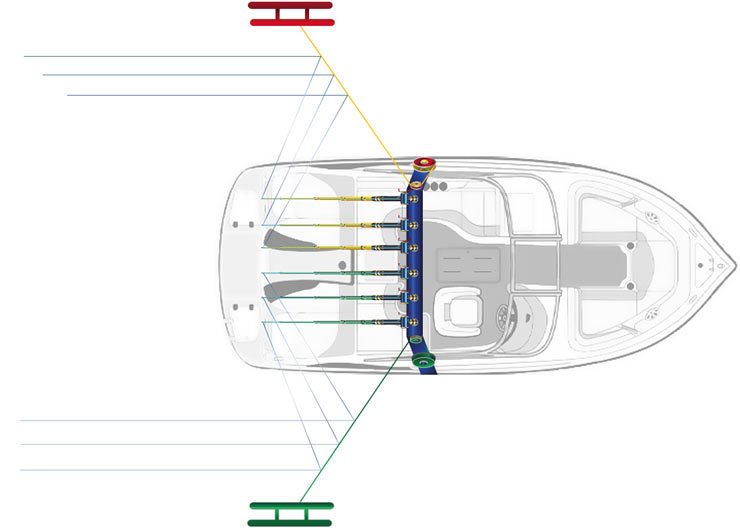
For example, the cockpit of our RIB boat is fitted with holders for trolling, which can hold up to ten trolling spinnings, split into two for fishing off the left or right of the boat.
Basically the normal set of spinnings can have as much as 16 units or even 20, depending on the type of fish and the location of fishing. For example in Sweden it is illegal to have more than 10 spinnings on a vessel, whereas in Finland that number is 14 units.
The spinning used for trolling has more rings, which are of the same diameter and there is a crossbar on the side of the handle, used to fit the spinning in the holder.
The trolling reels have multipliers to give torque boost and have a meter for the line in play. For your convenience, it is recommended to buy reels with line-meters, which indicate length in metres and not in feet.
There are a few reasons, which explain the desire to use more spinnings for trolling with gliders.
Cause one
As we already said, the boat, with the maximum number of simultaneously working spinnings, has more chances of having a good catch. It is the gliders, which give us such an opportunity.
Cause two
The important thing is that many of the fish are timid. They are scared by the noise of the boat’s engine and it is very reasonable, when fishing in waters with depths less than 13 metres, in transparent waters and at times, when the fish is in resting mode. The glider is the way out of this situation — the bait hooked using a glider rides significantly behind the boat and is out of the visible swirl.
In places, where the fish are regularly targeted and in places where they have learnt to avoid human contact, glider fishing will be the best bet.so if you use two gliders — one from each side of the boat and when each of them, 45 meters away from the boat, drags the bait on at least 5 spinnings, you fishing zone will be wider than 90 metres. Now you can imagine that when you go with such “weaponry”, you can cover tens of kilometres with you engine. Now multiplying this you can easily calculate the whole fishing zone and the number will astonish you.
Trolling with gliders cannot be compared with any other style of fishing, especially in the beginning and end of the season, when the fishing conditions are the most suitable, but it is difficult to find and hook the worthy fish.
We can also add to the above mentioned that trolling with gliders allows you to simultaneously use very different baits, including wobblers, lures, tackle with dead fish, similar or different as per size and colour, making it possible to throw the line to various horizons — it will be obvious that if a worthy fish would come in your range, you will have real chances of hooking it out.
The boat equipped with latest sonic location devices, which offer you a complete image of the relief of the bed, water temperature and presence of fish and its sizes, when using with gliders becomes highly sophisticated unit for efficient fishing in our reservoir for fishing record breaking pieces of kumzha, lake type salmon, trout or deep water pike.
Basic techniques of trolling with gliders.
As you reach close to the trolling zone, you must slow down your engine or shift to trolling engine. The most optimum starting speed would be 2 km/h. Depending on the waves attach a snap-hook, which is fastened to the glider’s tow cable, with the relevant hole in the glider. Usually the glider has 3 such holes. If the water is still or has slight fluttering, you should attach the snap-hook to the first hole of the glider from the head side, if there are waves then to the second hole and if the waves are very strong then to the third hole of the glider. This is needed to make sure that the glider would not jump out of water in wavy waters or on the contrary would go deeper in the waves. After this separate the glider corpuses, which are like a catamaran and carefully drop them overboard on to the water.
The trolling glider
The optimum speed of 2 km/h, when the cord is on the pulley, the gliders best detach from the boat and reach their “working position”. Since at the same time you have to prepare your spinnings and settle the tackle, this speed will be optimum since you will not miss the areas known to you and you will not have to hurry, risking entangling the tackle.
The depth of the water body is critically important – always use the sonic locator to have knowledge of the depth and bed relief and to know the tendency of change in depth, because with deployed gliders you need sufficient amount of time to turn the boat.
If the weather is fine, sunny and there is no wind or the water body has lots of fishing pressure, let the gliders go as far as possible from the boat and accordingly use maximum reel release length. If you are trolling in narrow waters or along the edge of the flooded river bed, release the glider to a minimum distance, for example to 30 m and accordingly cord release should be minimum for example 40m. We recommend that you colour mark the glider cords at 30, 35, 45 meters, to be able to release them from both sides of the boat during trolling to an equal distance. This way your boat will float freely on trolling speeds and it will be easier to control it if you do not have an autopilot installed. The recommended trolling speed, depending on the depth, wind speed and wave height is from 3.5 to 6.0 km/h.
Hold the trolling spinning into your hands and attach the bait to its line using the snap-hook (lure or tackle with dead fish), drop it into the water over the required side and release 30-40m line from the reel.
After this add some lead weight to the line according to the depth that you want to reach. We recommend rubber-lead weights, which are colour coded as per weight. For example the trolling weight to reach a depth of 20 meters is black in colour. Now you can increase the length of the released line to up to 60 meters.
Using a metallic latch fix the line release clip of your trolling rod on to the pulling cord of the glider and fix the trolling rod’s line in the latch, and after this, rotating the reel let the latch, together with the fixed in it line, slip over the pull line towards the glider – to the spot, which you consider fit. The line release can be stopped to stop the clip. Fit the rod in its holder.
The bait will raise to the working zone and will follow the vessel at the distance set by you, when you let the clip over the pulling cord. Till the bite takes place the clip will remain on the same spot. We do not recommend attaching the closest to the glider clip, too close, to avoid its submerging into water during turbulence. In the same manner fix the clips for all rods from the boat to the glider. Consequently or simultaneously, depending on the number of crew, you set the pulling cord for the glider on the other side of the boat. Taking the specifics of trolling in the Upper-Tuloma reservoir, especially the large number of kumzha and pike, we recommend you attach ahead of the bait some soft knotted metallic leashes of sizes not less than 60cm and a few snap-hooks with bearings. The leash will protect your bait in case of pike’s bite and nice snap-hooks will reduce the chances of your line tangling in case of kumzha’s bite, who as we know starts to ferociously spin after biting the bait.
You must keep your attention on working rods. As soon as the fish, heavier than 1.5-2 kg, bites the rod bends and the line goes free of the clip. At this moment slowly withdraw the spinning from the holder and go to the stern to draw the fish out of the water.
If the hooked fish won’t force the line free of the clip, don’t worry it’s just some small fish. Just take the rod out of the holder and jerk the line free of the clip. Then just draw this small fish in to free it back into the lake. When finishing your fishing session or when changing the bait, free the line on one of the rods from the clip and wind the line back on the reel. Change the bait and repeat the abovementioned procedure of bait setting. In this case you will need to set a new clip on the line.
Please keep in mind that when using multiple rods with the glider (planer), in case of changing bait after bite or hooking of any of the rods on one side of the boat, all working rods must be shifted in the holder in such a way that the released bait would be the closest to the boat. Since the line goes free of the clip, in case of a bite, all such clips go loose on the line and gather near the planer. This is nothing to worry about. Let them all stay there until the end of your session.
When you finish trolling, just release all lines from the clips, by jerking the rods, sideways, one after the other, and winding the line back on the reel. Never start winding the second reel before you finish winding the first one. After winding in all the lines, slow down the boat and decisively, but carefully, rotating the pullet pull in the planer and remove it out of the water. After this remove all clips from the pulling line and put them in the container, wherever you want to keep them (the clips must be stored in one typical spot, otherwise you forget them very easily). Wipe dry the planer and replace it on its regular place also. Fix the pulley with the pulling cord. Repeat the same procedure on the other side of the boat. Now you can step on the gas and hurry back home.
